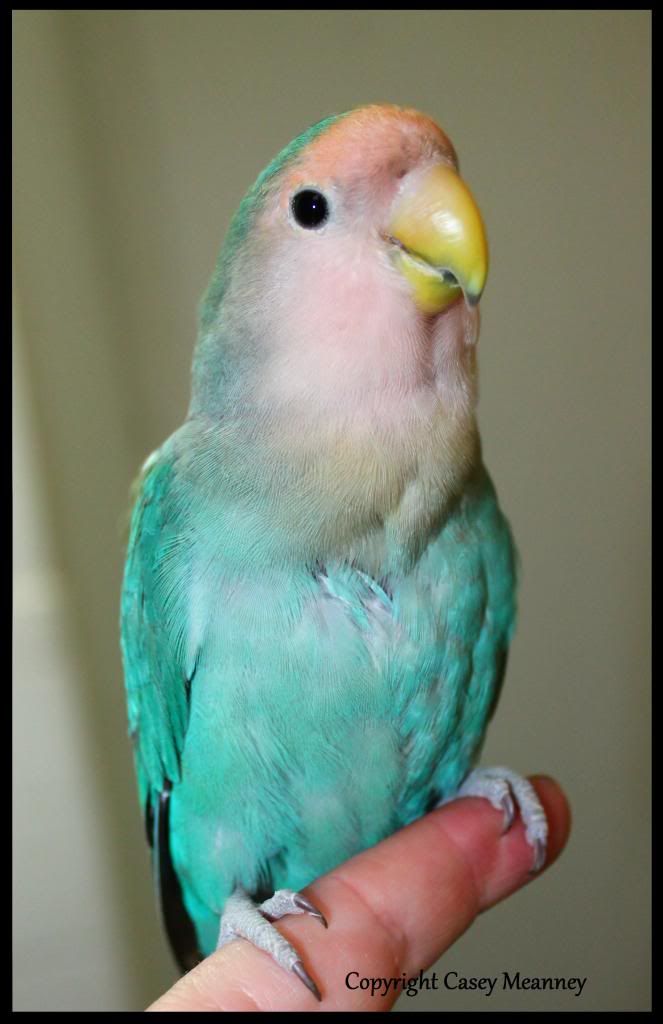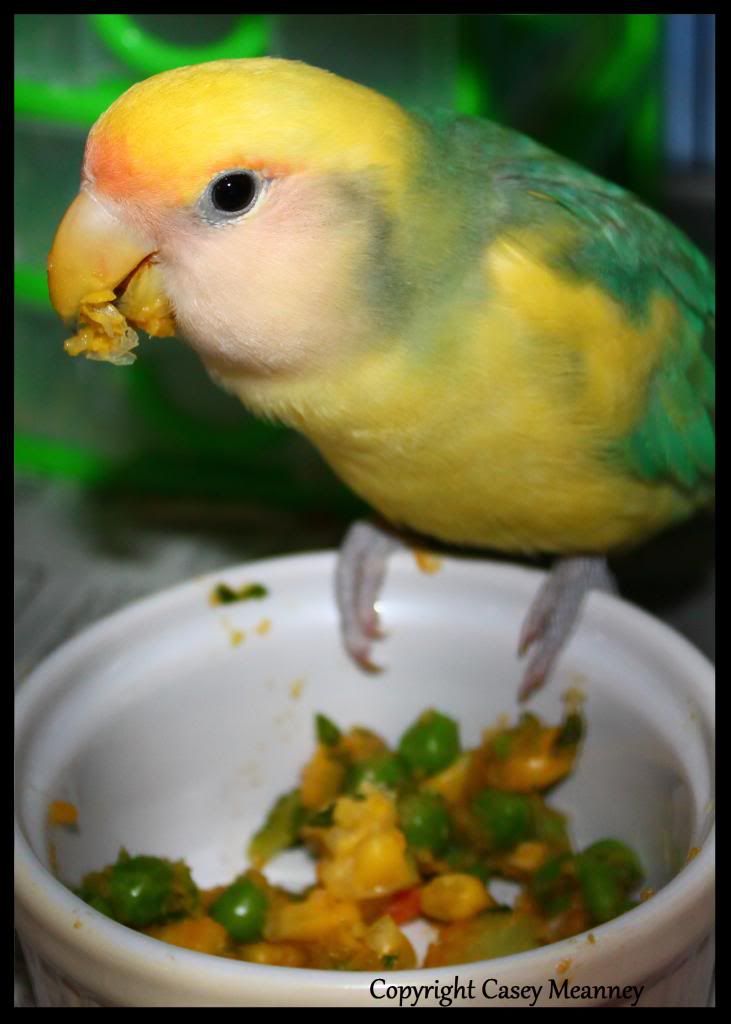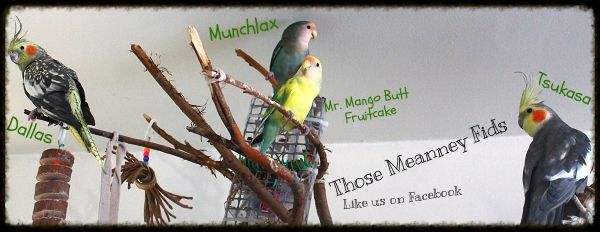Post by Casey on Apr 2, 2013 13:33:04 GMT -8
It's nearly impossible to guarantee a lovebird's gender without a DNA test. There are some behavioural clues that might indicate gender, but some birds do not follow the same patterns!
Some species of lovebirds are sexually dimorphic, such as the madagascar lovebird and the red faced lovebird, however most common species of lovebird are next to impossible to sex visually.
So, please remember none of these traits in this sticky are 100% guaranteed, but they can be important clues to help you guess your bird's gender.
Males tend to have narrower pelvic bones while females tend to have wider ones. This isn't the most accurate method of sexing out there, as there are several individuals who don't go by this rule. This is more accurate as the birds hit maturity.
Males tend to have narrower tails than females, who tend to have rounder and wider tails.
Males often stand with feet closer together while females stand with a wider stance. Not often reliable, but can be considered a factor in sexing your lovebird.
"Female" stance:

"Male" stance:

Females are often a tad larger than males, but this is the least reliable method as all birds are individual.
Females are often more aggressive and more territorial, however males can be nippy and territorial as well.
Female peach faced lovebirds will shred paper into neat strips and tuck it into their rump feathers to carry to their "nest". Males may chew up paper, but it is very rare to have a male successfully tuck things into their rump with the skill females have.
You can see a video of this behaviour here:
Males often may do a "dance" to a perceived mate if they are in a hormonal mood. They will often make faint clicking noises and turn around on the perch. They will also regurgitate to the object of their choice and may repeatedly scratch their head. This isn't a guarantee, but I've observed this only in my male and one of my books does describe this as male behaviour.
You can see a video of this behaviour here:
Males are more likely to mount an object and "rub" themelves on it, however in my observation, some dominant females will do the same thing.
Females will often raise their tails, spread their wings, and lower their heads in a breeding position. I have seen a DNA proven male do this same behaviour, but it is exceedingly rare.
The most guaranteed ways to tell gender of your lovebirds is either by DNA testing or by eggs. If your bird lays eggs, it is obviously a female. If you have a "pair" and one lays eggs, and the eggs are fertile, you can guarantee the genders of the birds.
However, if you have a "pair" and the pair lays more than 6 eggs at a time and none are fertile, you can assume you have two hens.
There is no guarantee by behaviour or by visual traits, but you might be able to make an educated guess.
Why is it important to know the sex of your bird?
I highly recommend DNA sexing your lovebird for a few reasons. If your bird ends up acting ill, knowing the gender of your bird could affect the outcome. If you have an eggbound bird but do not know the gender, you may not be able to save the bird in time to find out the cause of the "illness". Some reproductive problems cause illness and knowing your bird's gender could save them in a quicker amount of time.
Some species of lovebirds are sexually dimorphic, such as the madagascar lovebird and the red faced lovebird, however most common species of lovebird are next to impossible to sex visually.
So, please remember none of these traits in this sticky are 100% guaranteed, but they can be important clues to help you guess your bird's gender.
Males tend to have narrower pelvic bones while females tend to have wider ones. This isn't the most accurate method of sexing out there, as there are several individuals who don't go by this rule. This is more accurate as the birds hit maturity.
Males tend to have narrower tails than females, who tend to have rounder and wider tails.
Males often stand with feet closer together while females stand with a wider stance. Not often reliable, but can be considered a factor in sexing your lovebird.
"Female" stance:

"Male" stance:

Females are often a tad larger than males, but this is the least reliable method as all birds are individual.
Females are often more aggressive and more territorial, however males can be nippy and territorial as well.
Female peach faced lovebirds will shred paper into neat strips and tuck it into their rump feathers to carry to their "nest". Males may chew up paper, but it is very rare to have a male successfully tuck things into their rump with the skill females have.
You can see a video of this behaviour here:
Males often may do a "dance" to a perceived mate if they are in a hormonal mood. They will often make faint clicking noises and turn around on the perch. They will also regurgitate to the object of their choice and may repeatedly scratch their head. This isn't a guarantee, but I've observed this only in my male and one of my books does describe this as male behaviour.
You can see a video of this behaviour here:
Males are more likely to mount an object and "rub" themelves on it, however in my observation, some dominant females will do the same thing.
Females will often raise their tails, spread their wings, and lower their heads in a breeding position. I have seen a DNA proven male do this same behaviour, but it is exceedingly rare.
The most guaranteed ways to tell gender of your lovebirds is either by DNA testing or by eggs. If your bird lays eggs, it is obviously a female. If you have a "pair" and one lays eggs, and the eggs are fertile, you can guarantee the genders of the birds.
However, if you have a "pair" and the pair lays more than 6 eggs at a time and none are fertile, you can assume you have two hens.
There is no guarantee by behaviour or by visual traits, but you might be able to make an educated guess.
Why is it important to know the sex of your bird?
I highly recommend DNA sexing your lovebird for a few reasons. If your bird ends up acting ill, knowing the gender of your bird could affect the outcome. If you have an eggbound bird but do not know the gender, you may not be able to save the bird in time to find out the cause of the "illness". Some reproductive problems cause illness and knowing your bird's gender could save them in a quicker amount of time.


